Lima es la capital del Perú. Es una ciudad grande que combina lo antiguo y lo moderno. Esto nos permite conocer distintas facetas del Perú. La ciudad se ubica en la costa del Pacífico y destaca por su combinación de estilos arquitectónicos, culturas y tradiciones que la hacen única.
Lima, conocida como la Ciudad de los Reyes
La capital del Perú tiene una historia larga y apasionante que muchos desconocen. Repasaremos las distintas etapas de esta ciudad, desde su época inca hasta su transformación en una urbe moderna.
La capital peruana se ubica a lo largo de la costa y suele llamarse "Ciudad de los Reyes" porque Francisco Pizarro la fundó el 18 de enero de 1535, una fecha cercana al Día de la Epifanía o Día de Reyes (6 de enero).
Además, la ciudad fue dedicada al rey Carlos V de España y a su madre, la reina Juana (Juana la Loca). Sin embargo, a lo largo de su historia nunca recibió a un rey.
¿Dónde está ubicado el Perú?
Perú es un país de América del Sur occidental y limita con Ecuador y Colombia por el norte, Brasil por el este, Bolivia por el sureste, Chile por el sur y el océano Pacífico por el oeste.
El país presenta una gran variedad de paisajes, flora y fauna: zonas áridas junto al mar, altas montañas en los Andes y selvas húmedas en el Amazonas. Por ello, se ubica en el puesto 19 del mundo y es el tercer país más poblado de Sudamérica.
Asimismo, el país andino fue hogar de numerosas civilizaciones antiguas, entre ellas Caral, Mochica, Nazca, Chimú y el Imperio Inca. Cada una tuvo su capital o ciudades importantes a lo largo del territorio. Por todo ello, Perú es un país diverso, con múltiples lenguas y grupos étnicos. Por supuesto, sus ciudades históricamente más importantes son Cusco y Lima.
¿Cuál es la capital del Perú?
La capital y ciudad más grande del país es Lima. El área metropolitana de Lima alberga a más de 10 millones de personas, lo que la convierte en una de las ciudades más pobladas de Sudamérica.
La antigua capital del Perú
Del siglo XIV al XVI, la cultura inca dominó gran parte de Sudamérica. No solo el actual Perú; el Imperio Inca, también conocido como Tawantinsuyo (las cuatro provincias del sol), conquistó un vasto territorio: desde Colombia, pasando por Ecuador, Perú, Bolivia y Argentina, hasta el norte de Chile. Cusco fue el centro de este gran imperio y la ciudad más importante de Sudamérica. Hoy en día, Cusco es la capital histórica del Perú.
La nueva capital del Perú
Francisco Pizarro, el conquistador del Imperio Inca, fundó la ciudad de Lima en 1535 como la Ciudad de los Reyes, debido a que la fecha de su establecimiento estaba próxima al 6 de enero, día de la Epifanía. Sin embargo, el nombre cayó en desuso y Lima se consolidó como el nombre oficial de la ciudad para sus nuevos habitantes.
¿Dónde se ubica Lima?
La capital del Perú se encuentra a una altitud general de 528 pies (161 metros) en el centro oeste del país. Por su parte, la Plaza Mayor de Lima está a aproximadamente 505 pies (154 metros) de altitud, a 8 millas (13 km) tierra adentro desde el océano Pacífico, en el desierto costero del Perú.
Aunque la "Ciudad de los Reyes" se fundó inicialmente a orillas del río Rímac, hoy se extiende por amplias zonas desérticas de norte a sur e incluye 11 ríos y numerosos valles. En el área metropolitana que integran Lima y Callao, destacan tres ríos principales: Chillón, Rímac y Lurín. La ciudad creció con rapidez en las décadas de 1980 y 1990 por la migración desde el campo y el conflicto interno.
Hoy, la capital es considerada la quinta ciudad más grande de Sudamérica.
Historia de la capital del Perú
Lima antes de los incas
Antes de los incas, el área que hoy conocemos como Lima estuvo habitada por diversas culturas originarias que dejaron importante evidencia arqueológica de su existencia. Entre las más relevantes se encuentran:
| Civilización | Período | Ubicación | Reconocida por: |
|---|---|---|---|
| Civilización Caral-Supe | 3000 a. C. - 1800 a. C. | Norte Chico, al norte de la ciudad | Antiguas estructuras piramidales y complejos residenciales |
| Cultura Lima | 100 d. C. - 650 d. C. | Miraflores, zona céntrica | Huaca Pucllana, una enorme pirámide de adobe y barro |
| Imperio Wari | Desde 600 d. C. | Andes centrales | Dominio en la construcción en piedra y elaboración de textiles finos |
Estas culturas formaron parte de una larga trayectoria de sociedades complejas en los Andes antes del ascenso del Imperio Inca. Cada una aportó al desarrollo de la organización social, las tradiciones constructivas y las prácticas agrícolas de la región.
Lima durante el Imperio Inca
Hacia el siglo XV, el Imperio Inca, con base en Cusco, inició su expansión y fue incorporando de forma gradual el área de la actual capital. Para cuando llegaron los españoles en el siglo XVI, la región estaba firmemente bajo control inca. Esto es lo que se sabe sobre la ciudad costera en tiempos del Tahuantinsuyo:
| Tema | Descripción |
|---|---|
| Pachacámac | Este sitio, ubicado a unos 40 km al sureste de la ciudad actual, fue un importante centro de peregrinación incluso antes de los incas. Una vez que lo incorporaron, lo integraron a su sistema religioso y construyeron nuevas estructuras, como el Templo del Sol. |
| Caminos incas | Como parte del Tahuantinsuyo, la zona quedó integrada a una extensa red de vías, andenes agrícolas y centros administrativos. El sistema vial inca, conocido como Qhapaq Ñan, facilitó el transporte, la comunicación y el intercambio en todo el imperio. |
| Administración | Los incas dividieron su territorio en 4 suyos o provincias. El área de la actual capital formaba parte del Chinchaysuyu, en la costa. Dentro de este sistema, los habitantes estaban sujetos a la mita, un régimen de trabajo obligatorio para el Estado en obras de construcción, agricultura y minería, entre otras. |
Influencia en las culturas locales: En la zona de la capital, el dios local Pachacámac fue asociado al dios solar inca, Inti. Además, los gobernantes establecieron yanaconas, servidores leales trasladados a nuevas tierras para asegurar la fidelidad al Estado inca.
Lima durante la Conquista del Perú
La capital del Perú tuvo un papel clave en la conquista española. El conquistador Francisco Pizarro fundó la ciudad el 18 de enero de 1535, y desde allí se organizó la colonización de la región.
A continuación, un resumen de los hechos más relevantes durante la Conquista del Perú.
Fecha | Acontecimiento |
|---|---|
1532 | El Inca Atahualpa fue capturado en Cajamarca por los conquistadores españoles al mando de Francisco Pizarro. |
Abril de 1534 | Francisco Pizarro estableció la primera capital del Perú en Jauja, ciudad andina de clima templado agradable. |
Diciembre de 1534 | Pizarro ordenó trasladar todos los tesoros de Jauja a Lima, ciudad cercana al mar y al principal puerto de Callao. |
18 de enero de 1535 | Francisco Pizarro estableció la ciudad de Lima (Ciudad de los Reyes) como la nueva capital de la Colonia. |
6 de mayo de 1536 | Se inició la rebelión de Manco Inca. Envió al capitán Quizo Yupanqui y sus tropas a sitiar la reciente capital. En septiembre, las fuerzas incas llegaron a la “Ciudad de los Reyes”, donde Quizo Yupanqui fue abatido y el ejército inca se replegó hacia la sierra. |
26 de junio de 1541 | Francisco Pizarro fue asesinado por un grupo de almagristas liderados por Diego de Almagro el Mozo. |
Lima durante la Colonia
En el período colonial, la “Ciudad de los Reyes” fue la capital del Virreinato del Perú y el centro del poder español en Sudamérica. Esta etapa, que se extendió desde mediados del siglo XVI hasta inicios del XIX, vio a la capital crecer en tamaño e importancia. Algunos puntos clave de esos años:
Aspecto | Descripción |
|---|---|
Consolidación como capital | Tras su fundación en 1535, la ciudad se convirtió rápidamente en el centro administrativo, político y económico de la Colonia. El Virreinato del Perú, creado en 1542, abarcó un territorio extenso desde el actual Panamá hasta Chile y Argentina. |
Desarrollo arquitectónico | La ciudad experimentó un notable impulso constructivo. Se levantaron edificios en estilo barroco español con influencias locales. Entre las obras destacadas figuran la Catedral de Lima, el Convento de San Francisco y el Palacio de Torre Tagle. |
Centro cultural | La ciudad se consolidó como referente cultural. La Universidad de San Marcos, fundada en 1551, es de las más antiguas del continente. En este periodo se produjeron importantes obras literarias, científicas y filosóficas. |
Importancia económica | Fue el principal centro comercial sudamericano. El puerto del Callao fue la salida del plata de Potosí (hoy Bolivia) hacia España y un punto clave en las rutas entre España y el Lejano Oriente. |
Estructura social | La sociedad colonial fue altamente estratificada. En la cúspide estaban los peninsulares; luego, los criollos. Después, los mestizos; y en los peldaños inferiores, los pueblos indígenas y las personas esclavizadas de origen africano. |
Revueltas y levantamientos | Pese al control español, hubo alzamientos de población indígena y mestiza. Destaca la rebelión de Túpac Amaru II a fines del siglo XVIII. |
Lima en la época republicana
La etapa republicana se inició oficialmente en 1821, cuando el Perú declaró su independencia de España. La capital desempeñó un papel decisivo en este periodo. Entre los hechos y cambios más relevantes se encuentran:
Aspecto | Descripción |
|---|---|
Independencia | El Perú proclamó su independencia el 28 de julio de 1821 y Lima pasó a ser la capital de la nueva república. José de San Martín hizo la proclamación en su Plaza Mayor. |
Conflictos y cambios de poder | Los primeros años estuvieron marcados por disputas internas y alternancias en el gobierno, con tensiones entre centralistas y federalistas. La capital fue con frecuencia el centro de esos conflictos. |
Guerra del Pacífico | Entre 1879 y 1884, el Perú enfrentó a Chile en la Guerra del Pacífico. La capital estuvo ocupada por fuerzas chilenas de 1881 a 1883, con fuertes impactos económicos y políticos. |
Economía e infraestructura | Pese a los conflictos y la inestabilidad, hubo crecimiento económico, especialmente con la exportación de guano y otros recursos. Esa bonanza permitió modernizar la ciudad con nuevos edificios públicos, transporte y expansión urbana. |
Desarrollo cultural | La ciudad continuó como referente cultural. Creció y se crearon nuevos distritos. La arquitectura incorporó también influencias francesas e italianas. |
Crecimiento poblacional y migración | La época republicana registró un fuerte aumento de la población y movimientos migratorios. Muchas personas del interior se trasladaron a la capital en busca de oportunidades, lo que impulsó su expansión. |
Conflictos a fines del siglo XX | En las últimas décadas del siglo XX, la ciudad afrontó crisis económicas y violencia interna, en particular la asociada al grupo armado Sendero Luminoso. |
Etapa posterior al conflicto | Desde los años 2000, Lima ha registrado crecimiento y modernización, aunque persisten desafíos como la desigualdad y la planificación urbana. Fue sede de los Juegos Panamericanos de 2019, el evento deportivo más grande organizado por el país. |
Pandemia de COVID-19 | La ciudad más poblada del Perú se vio seriamente afectada por la pandemia. Hubo un alto número de casos y se aplicaron medidas estrictas para contener el contagio, como confinamientos, toques de queda y restricciones a actividades no esenciales. |
Cómo moverse por Lima
Desplazarse por Lima puede ser todo un reto, sobre todo en horas punta. Además de los taxis, hay una buena combinación de opciones públicas y privadas, confiables y económicas, que te ayudan a recorrer la capital peruana con más seguridad y comodidad.
Aplicaciones de taxi
En lugar de parar un taxi en la calle, muchos residentes y viajeros prefieren apps de viaje como Uber, Cabify, DiDi y Beat. Estas aplicaciones permiten ver la tarifa antes de partir, elegir la categoría del vehículo y compartir tu ruta en tiempo real con un contacto de confianza, lo que suma seguridad y previsibilidad.
Son especialmente útiles de noche o para moverse entre distritos como Miraflores, Barranco y San Isidro. Los precios suelen ser competitivos y la calidad del servicio tiende a ser más consistente que en taxis informales de la calle.
Caminatas y taxis autorizados
Lima tiene zonas agradables para caminar durante el día, como el malecón de Miraflores, el centro de Barranco y tramos del Centro Histórico. Para distancias cortas, caminar te permite disfrutar del entorno y evitar el tráfico por completo.
Si necesitas un auto desde un hotel, restaurante o atracción, solicita un taxi autorizado a través del establecimiento o mediante una app verificada como las mencionadas. Evita subir a vehículos sin identificación visible.
Opciones de transporte público
Una de las formas más prácticas de moverse por la ciudad es el Metropolitano, un sistema de buses rápidos que circula por carriles exclusivos. Conecta distritos clave como el Centro de Lima, Miraflores, Barranco, San Isidro y Chorrillos. Funciona con tarjetas recargables y es una manera eficaz de evitar la congestión en las avenidas principales.
También puedes usar los Corredores Complementarios, una red de buses identificados por colores (azul, rojo, morado, amarillo y verde). Aunque se ralentizan en horas punta, siguen siendo opciones económicas y seguras si abordas en paraderos oficiales.
Los corredores conectan con el Metro de Lima, que actualmente opera como tren eléctrico en su primera etapa (Línea 1). Atraviesa la ciudad de sur a norte.
Consejo útil...
Planifica tus traslados fuera de las horas punta, aproximadamente de 7:00 a 9:00 a. m. y de 5:00 a 8:00 p. m., y combina distintos medios según tu ruta. Un poco de planificación puede mejorar mucho tu experiencia en Lima.
Seguridad en Lima, Perú
Como en toda gran ciudad, en Lima hay zonas no recomendadas para pasear, conocidas como “zonas rojas”. La buena noticia es que están lejos de los distritos de clase media donde se concentran la mayoría de hoteles, atracciones y restaurantes, como Miraflores, Barranco, Surco y San Isidro. Aun así, es importante mantener la cautela y seguir medidas de sentido común.
Puntos de seguridad a tener en cuenta:
Celular y atención en la calle
Mantén tu celular guardado mientras caminas por la ciudad. Usarlo dentro de hoteles, atracciones, restaurantes y en taxis formales y registrados no suele presentar problemas, pero en veredas y esquinas concurridas es mejor mantenerlo fuera de la vista.
Muévete en distritos seguros
Desplázate solo por zonas turísticas seguras como las mencionadas: Miraflores, Surco, Barranco y San Isidro. Si deseas visitar el centro histórico, hazlo con tu guía y en transporte privado.
Pagos y propinas
Puedes pagar con tarjetas o aplicaciones confiables al comprar o reservar servicios en la capital del Perú. Lima es una de las ciudades de la región con mayor adopción de pagos electrónicos. La mayoría de restaurantes, hoteles e incluso muchas entradas a atracciones aceptan tarjetas. Lleva algo de efectivo principalmente para propinas; no es una costumbre muy extendida en la capital, pero se agradecen.
Cambio de moneda sin complicaciones
Si necesitas cambiar dinero, hazlo en sucursales bancarias o casas de cambio autorizadas. No cambies en la calle. Aunque los cambistas puedan ofrecer una tasa atractiva, la seguridad y confiabilidad de bancos y casas de cambio autorizadas siguen siendo una ventaja para ti y tus pertenencias.
Atención médica y seguro
La capital cuenta con varias clínicas privadas y hospitales con buen nivel de atención. Si te sientes mal o necesitas ayuda, contacta primero a tu aseguradora de viaje; muchas tienen convenios con estos centros y pueden coordinar visitas y pagos.
Visitas guiadas y servicios organizados
Para recorrer ciudades grandes, reservar con una agencia o un tour organizado es una buena decisión. Contar con un guía profesional, alguien que conoce bien la zona, te ayuda a aprovechar el tiempo y seguir rutas y lugares recomendados.
Siguiendo estos pasos, podrás enfocarte en disfrutar la gastronomía, la historia y la costa de Lima, manteniendo planes fluidos y seguros.
¿Cuáles son las principales atracciones turísticas de Lima?
La actual capital andina tiene una larga historia que se remonta al Imperio Inca, y alberga numerosos sitios históricos. La Plaza de Armas es la plaza principal de la ciudad, rodeada de edificios coloniales, incluida la Catedral. Otros lugares destacados son la Huaca Pucllana, una antigua pirámide; el Convento de San Francisco; y el Museo Larco, con una amplia colección de arte precolombino.
La capital peruana también es ideal para disfrutar la gastronomía del país. La ciudad cuenta con muchos restaurantes donde probar platos como el ceviche, el lomo saltado y la papa a la huancaína. Además, hay propuestas de cocina de autor y de fusión. Junto a sus sitios históricos y su buena mesa, Lima es conocida por sus playas. La Costa Verde es un tramo de litoral con acantilados, orillas rocosas y vegetación abundante. Miraflores es uno de los distritos costeros más conocidos y concentra varios hoteles, restaurantes y tiendas. En Miraflores también encontrarás opciones como surf, paddle y kayak.
Pachacámac: el sitio preinca en Lima
Pachacámac es el complejo arqueológico más grande e importante de la ciudad, ubicado en el distrito de Lurín. Abarca 465,32 hectáreas, con un perímetro de 12 925,41 metros lineales, y está bajo la jurisdicción del Ministerio de Cultura. Cuenta con un museo del mismo nombre, con más de 6 500 piezas prehispánicas de cerámica, madera, metal y textiles. Una de las piezas más emblemáticas es el ídolo de Pachacámac.
Pachacámac proviene de los términos quechuas pacha (tierra) y camac (creador). El lugar fue especialmente visitado por peregrinos de Cusco, que acudían para consultar al oráculo, considerado capaz de predecir el futuro y ofrecer consejos sobre asuntos importantes. El sitio incluye el Templo de Pachacámac, erigido en honor a la deidad.
La Cultura Lima ocupó inicialmente Pachacámac; construyó templos y oráculos visitados por pobladores de todo el ámbito andino. Entre los años 600 y 1000 d. C. fue ocupado por la cultura Wari, periodo en el que el templo de Pachacámac alcanzó gran renombre.
Hacia 1470, los incas habían conquistado y ocupado la región. Para 1533, Pachacámac era el centro religioso más importante de la costa del Perú, como consignan crónicas de los conquistadores hispanos.
Ciudad Sagrada de Caral-Supe
La Ciudad Sagrada de Caral-Supe, un monumento arqueológico de 5 000 años y 626 hectáreas, se encuentra a 182 kilómetros al norte de la capital, en la provincia de Barranca, con vista al valle del río Supe. Es la civilización más antigua de América.
Se considera el asentamiento más antiguo conocido del continente, con unos 5 000 años de antigüedad. Aunque no es tan conocida como Machu Picchu o las Líneas de Nazca, Caral-Supe es una pieza clave del patrimonio cultural del Perú. Identificada a inicios del siglo XX, ha sido ampliamente excavada y ha aportado abundante información sobre las primeras sociedades peruanas. Hoy, los visitantes pueden ver restos de templos, pirámides, otros edificios públicos y varias residencias.
Caral fue inscrita en la Lista del Patrimonio Mundial en 2009.
Museo Arqueológico Rafael Larco Herrera
El Museo Larco es un museo privado de arte precolombino en el distrito de Pueblo Libre, Lima. Funciona en una casona virreinal del siglo XVIII. Sus salas, organizadas cronológicamente, ofrecen una visión general de 5 000 años de historia precolombina. Es conocido, entre otros, por sus galerías de cerámica erótica.
El Museo Larco (oficialmente Museo Arqueológico Rafael Larco Herrera) es uno de los museos más importantes dedicados al arte precolombino. Reúne más de 45 000 piezas de diversas culturas de América, entre ellas Moche, Chimú, Nazca, Inca y otras. Fundado en 1926 por Rafael Larco Herrera, su colección se exhibe en una mansión colonial del siglo XVII e incluye cerámica utilitaria y ceremonial, además de objetos de oro y plata, esculturas en piedra y tallas. A lo largo del año también presenta exposiciones temporales.
El Museo Larco es una referencia para comprender la historia y las culturas precolombinas de América. Actualmente, comparte parte de su colección con su museo asociado en Cusco, el Museo de Arte Precolombino.
Circuito Mágico del Agua
Uno de los proyectos metropolitanos más relevantes, el Circuito Mágico del Agua, se inauguró el 26 de julio de 2007 y desde entonces es un emblema de la ciudad y símbolo de recuperación de espacios públicos. La ceremonia de apertura se realizó ese mismo 26 de julio. El parque cuenta con trece fuentes “cibernéticas” que combinan agua, música y sonido con luces láser para crear espectáculos únicos.
Plaza Mayor de Lima
La plaza principal de Lima, también conocida como Plaza de Armas, es el centro de la ciudad desde su fundación en 1535. Se ubica en el Centro Histórico y está rodeada de edificios coloniales como la Catedral, el Palacio de Gobierno y el Municipio. Es un punto de encuentro para locales y visitantes y suele acoger festividades y otros eventos. La Plaza de Armas se construyó inicialmente como una fortaleza para proteger la ciudad. Con el tiempo fue ampliada y rediseñada en varias ocasiones. En 1746, un fuerte sismo dañó muchos edificios del entorno, incluida la Catedral. La plaza fue reconstruida después del terremoto y ha atravesado distintos cambios a lo largo de los siglos. Hoy es un espacio apreciado por los limeños: un buen lugar para observar la vida cotidiana, descansar a la sombra o admirar algunos de los edificios más icónicos de la ciudad.
En la Plaza Mayor de Lima, José de San Martín proclamó la independencia del Perú el 28 de julio de 1821. Esta fecha es feriado nacional, celebrado como el Día de la Independencia. San Martín había luchado por la independencia en Argentina y Chile antes de llegar al Perú. Arribó a la capital en 1820 y pronto obtuvo el respaldo de muchos peruanos. Su objetivo era expulsar a los españoles de Sudamérica para que los países fuesen independientes. Lo logró y proclamó la independencia el 28 de julio de 1821, un hito para el Perú y para toda la región.
Tours en Lima y alrededores
City tour de Lima
Puedes recorrer lo mejor del Centro Histórico de Lima en un tour de medio día o de día completo. Recomendamos contratar una empresa que te traslade al centro en transporte privado y te permita explorar con un guía local. Visitarás la Plaza San Martín, el Museo Convento de San Francisco y Catacumbas, la Plaza de Armas (Plaza Mayor), el Museo Larco Herrera y muchos otros sitios.
Nada con lobos marinos en las Islas Palomino
Las Islas Palomino se ubican en la provincia del Callao. Estas islas turísticas albergan numerosas colonias de lobos marinos y aves. Para llegar, primero debes ir al Callao y luego navegar en bote unos 40 minutos hasta la zona.
Tour de día completo a Caral
Necesitarás un día entero para visitar Caral en una van privada y con un guía. Primero se conduce alrededor de 3.5 horas hasta el valle de Supe, donde está Caral. En el regreso, puedes pasar por Huacho para almorzar y visitar la playa.
Tour gastronómico
El Perú es uno de los grandes destinos culinarios del mundo, y la actual capital peruana alberga varios de los mejores restaurantes. Dedica una mañana a recorrer mercados locales y a preparar platos peruanos como el ceviche.
Lima: City tour nocturno + Circuito Mágico del Agua
Puedes explorar el Centro de la ciudad de noche y visitar el Circuito Mágico del Agua.
Nuevo aeropuerto de Lima Jorge Chávez
Si llegas a Lima por aire, prepárate para una experiencia distinta. El nuevo Aeropuerto Internacional Jorge Chávez se ubica en el Callao, a solo 12 kilómetros del centro histórico, y cambia la forma en que los viajeros ingresan al país. Construido como parte del proyecto de gran escala Lima Airport 2025, este moderno terminal refuerza la conectividad aérea y eleva el confort, la seguridad y la eficiencia para millones de pasajeros.
Una terminal pensada para los viajeros
Distribuido en cinco niveles operativos, el aeropuerto está diseñado para que tu recorrido sea fluido desde el check-in hasta el embarque. Entre sus puntos destacados:
- Más de cien counters de aerolíneas y quioscos de autoservicio
- Áreas comerciales panorámicas con tiendas duty-free y restaurantes con vistas en todas las direcciones
- Salas VIP con acceso directo a las puertas, cabinas privadas para descanso y terrazas
- Perú Plaza, un espacio cultural y gastronómico animado, ideal para relajarte antes del vuelo
Llegar al aeropuerto Jorge Chávez es más fácil que nunca
Puedes evitar taxis costosos. Dos opciones prácticas destacan:
- AeroDirecto: conecta distritos importantes como Miraflores y Los Olivos por solo 1.50 dólares estadounidenses o 5.40 soles, con acceso directo al segundo piso de la terminal
- Airport Express Lima: sale del Parque Kennedy en Miraflores y ofrece internet inalámbrico, asientos amplios y opciones flexibles para equipaje por unos 5 dólares estadounidenses o 18 soles
Consejo útil
Planifica tu llegada con anticipación. Intenta estar en el aeropuerto tres horas antes para vuelos internacionales y dos horas antes para vuelos nacionales. Suma una hora extra a tu cálculo porque el tráfico en la avenida Morales Duárez, la vía principal de acceso, suele ser intenso.
Un futuro conectado
Muy pronto, el aeropuerto se conectará con la Línea 2 del Metro de Lima mediante un monorriel moderno, lo que lo convertirá en uno de los aeropuertos con mejor acceso de Sudamérica.
Empieza a explorar el Perú apenas aterrices: Lima te da la bienvenida y sorprende.
Encuentra más en nuestro blog: Nuevo Aeropuerto Internacional Jorge Chávez de Lima: la terminal más moderna de Sudamérica.
Preguntas frecuentes sobre Lima – Perú
¿Cuál es la altitud promedio de la ciudad de Lima?
Lima está a nivel del mar; la altitud promedio del Centro Histórico es de 528 pies (161 metros).
¿Cuál es la población de Lima?
La población de Lima se estima en 10,432,133 para 2025, incluyendo Lima Metropolitana y distritos, lo que representa el 30.4% de la población total del Perú (34,350,244), según proyecciones al 30 de junio de 2025. Esto según el informe de Andina noticias.
¿Cuál es la religión predominante en Lima?
La religión predominante es el cristianismo. Sin embargo, en el Perú existe una tradición de sincretismo religioso originada en el encuentro entre el catolicismo y las creencias andinas tras la conquista. También están presentes el judaísmo, budismo, hinduismo e islam, en parte por la inmigración de los últimos años.
¿Cómo es el clima de Lima?
Aunque Lima se ubica en zona tropical y desértica, tiene un clima templado por la cercanía del océano Pacífico.
En verano, de diciembre a abril, la temperatura diaria suele ir de 18 °C (64 °F) a 22 °C (72 °F) y de 24 °C (75 °F) a 29 °C (84 °F). En estos meses, los días son soleados y cálidos.
En invierno, de junio a octubre, las temperaturas oscilan entre 14 °C (57 °F) y 16 °C (61 °F), con mínimas cercanas a 14 °C (57 °F) y máximas de 16 °C (61 °F) a 19 °C (66 °F). El cielo suele estar gris, con lloviznas matutinas y alta humedad.
Mayo y noviembre son meses de transición en los que se observan cambios repentinos en el tiempo.
¿Cuál es la moneda principal en Lima?
La moneda del Perú es el sol (S/); en la mayoría de mercados y tiendas locales se paga en soles. No obstante, en los bancos puedes operar en soles o en dólares. Las transacciones de autos, viviendas y bienes raíces suelen realizarse en USD.
¿Cómo está compuesta la población de Lima?
La población limeña está integrada por diversos grupos étnicos. Los más numerosos son mestizos, europeos (descendientes de españoles, alemanes, italianos y franceses), afroperuanos y asiáticos (China y Japón).
Gracias a esta mezcla, el Perú es hoy uno de los mejores destinos gastronómicos del mundo. La cocina china e italiana, entre otras, influyeron en la creación de platos peruanos únicos.
¿Cómo llegar a Lima?
Por tierra
La Carretera Panamericana recorre el país de sur a norte y conecta las ciudades de la costa, además de enlazar con Chile por el sur y Ecuador por el norte. También hay vías hacia el este que comunican con ciudades andinas y la selva del Perú.
En avión
Desde el Aeropuerto Internacional Jorge Chávez, en la provincia constitucional del Callao y a unos 30 minutos del centro, hay vuelos a todas las ciudades del Perú y a múltiples destinos internacionales.
La mejor manera de viajar de Lima a Cusco
La forma más rápida es volar del Aeropuerto Jorge Chávez al Aeropuerto Alejandro Velasco Astete de Cusco. La duración es de aproximadamente 1 hora.
Para quienes desean explorar más, se puede viajar en bus desde la capital por Abancay hacia Cusco (unas 20 horas). Otra opción es ir en bus vía Arequipa y Juliaca en un trayecto de 24 horas, con Cusco como destino final.
¿Cuál es el idioma oficial de Lima, Perú?
Los idiomas oficiales del Perú son el español, el quechua y el aimara. Además, se hablan muchas lenguas indígenas. El español se usa desde el siglo XVI y alrededor del 80% de la población lo tiene como lengua materna. El quechua, transmitido por generaciones, es primera lengua de cerca del 13% de la población. El aimara es primera lengua de aproximadamente el 3%. Entre las lenguas indígenas destacan shipibo-konibo, ashaninka y awajún, entre otras.
¿Cuál es la zona horaria del Perú?
El Perú usa Peru Time (PET), que es UTC−5, y no aplica horario de verano. Regla útil: cuando Estados Unidos está en horario de verano, el Perú se alinea con Horario del Centro; cuando EE. UU. está en horario estándar, coincide con Eastern Standard Time.

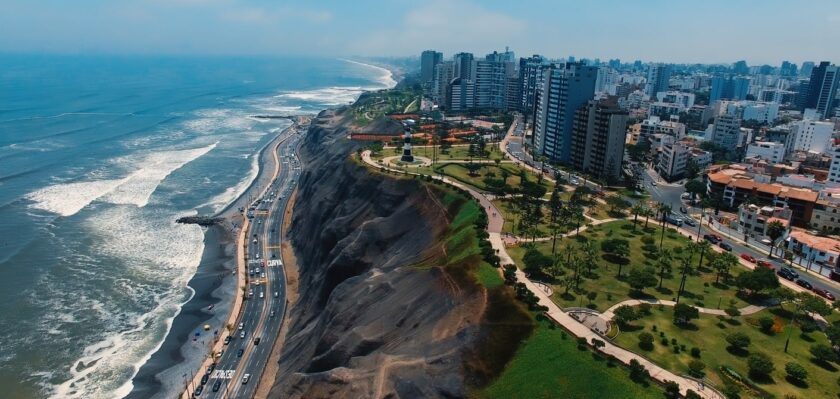
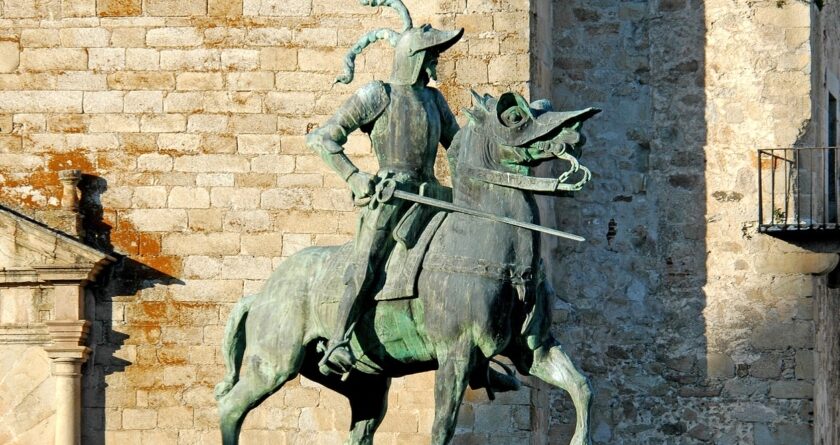
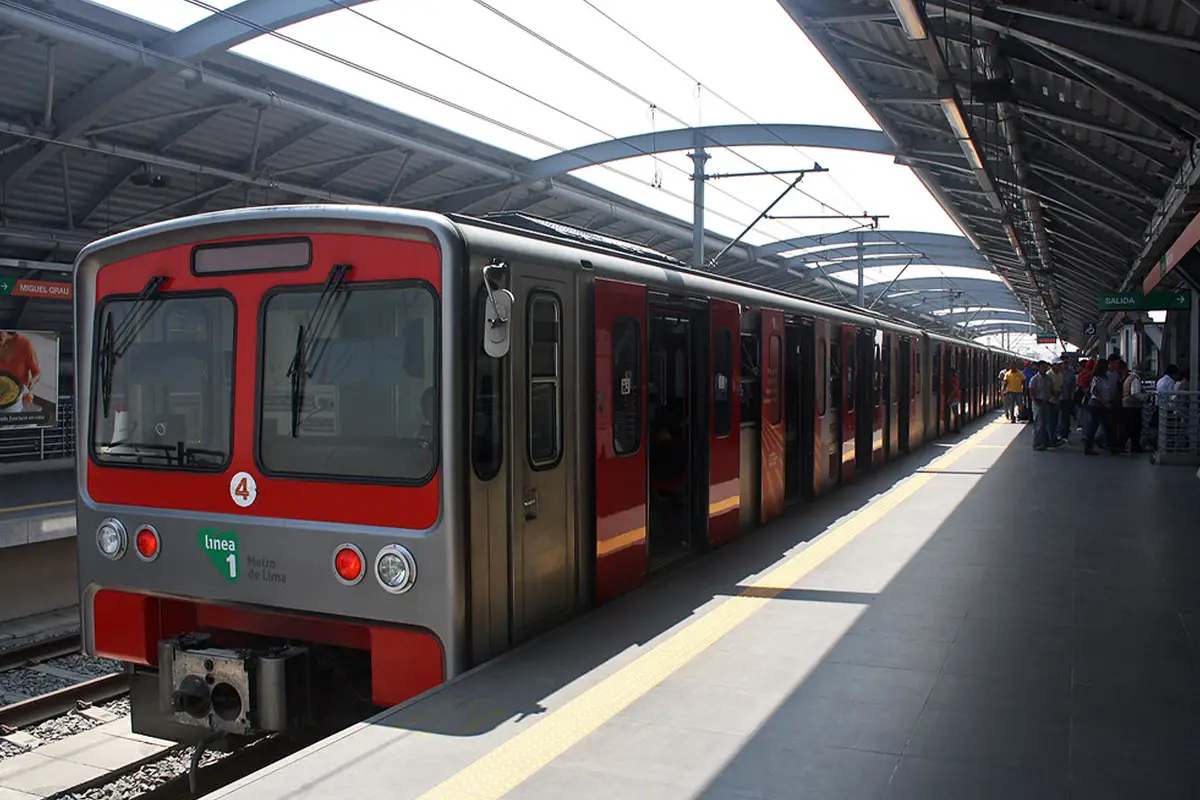
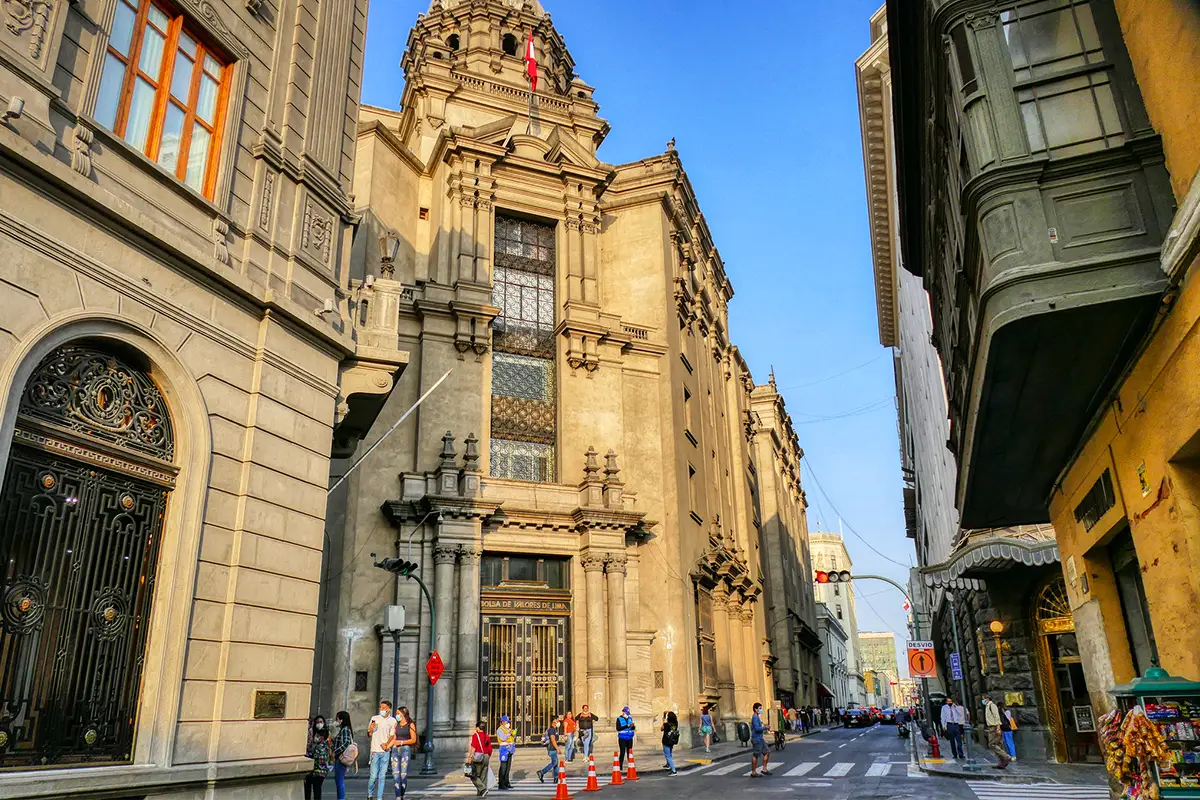
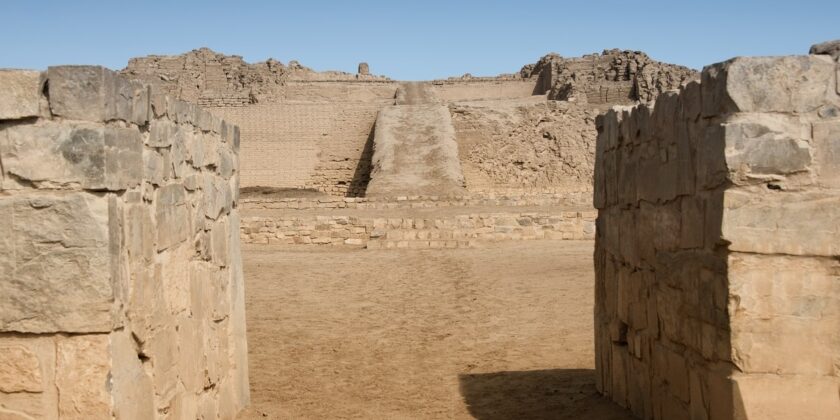
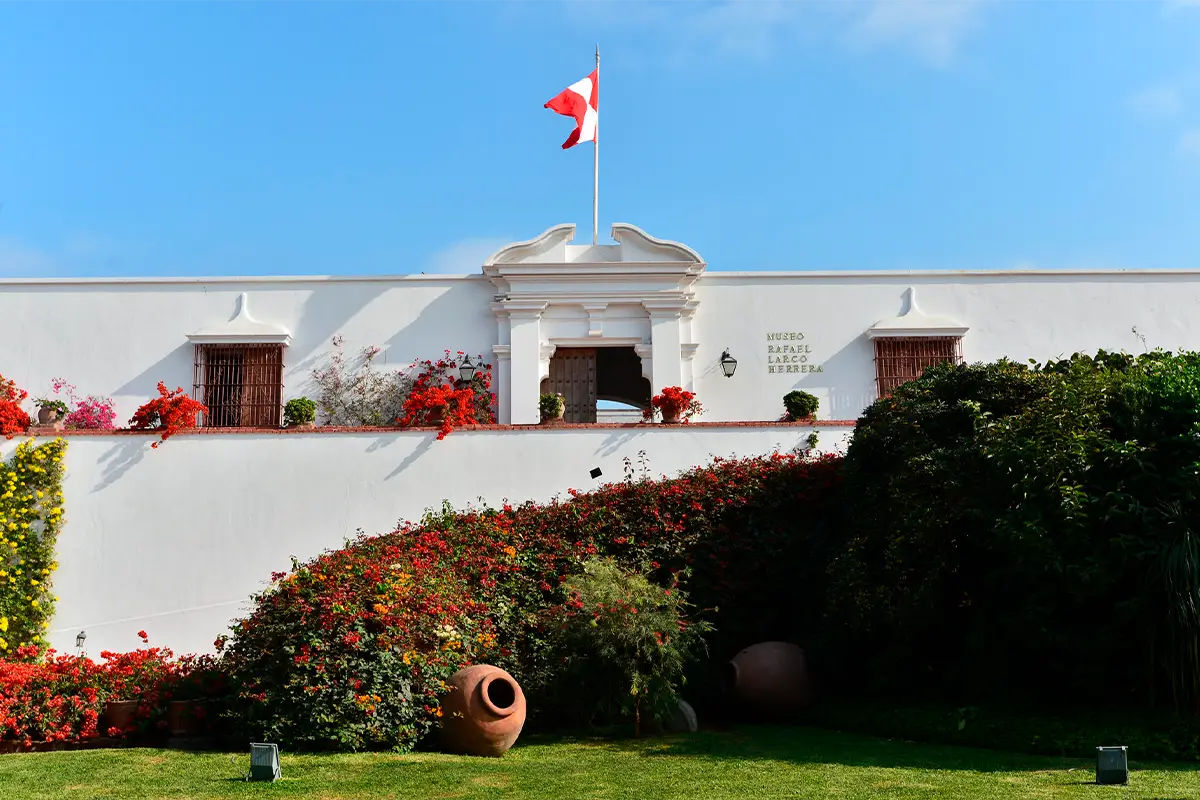

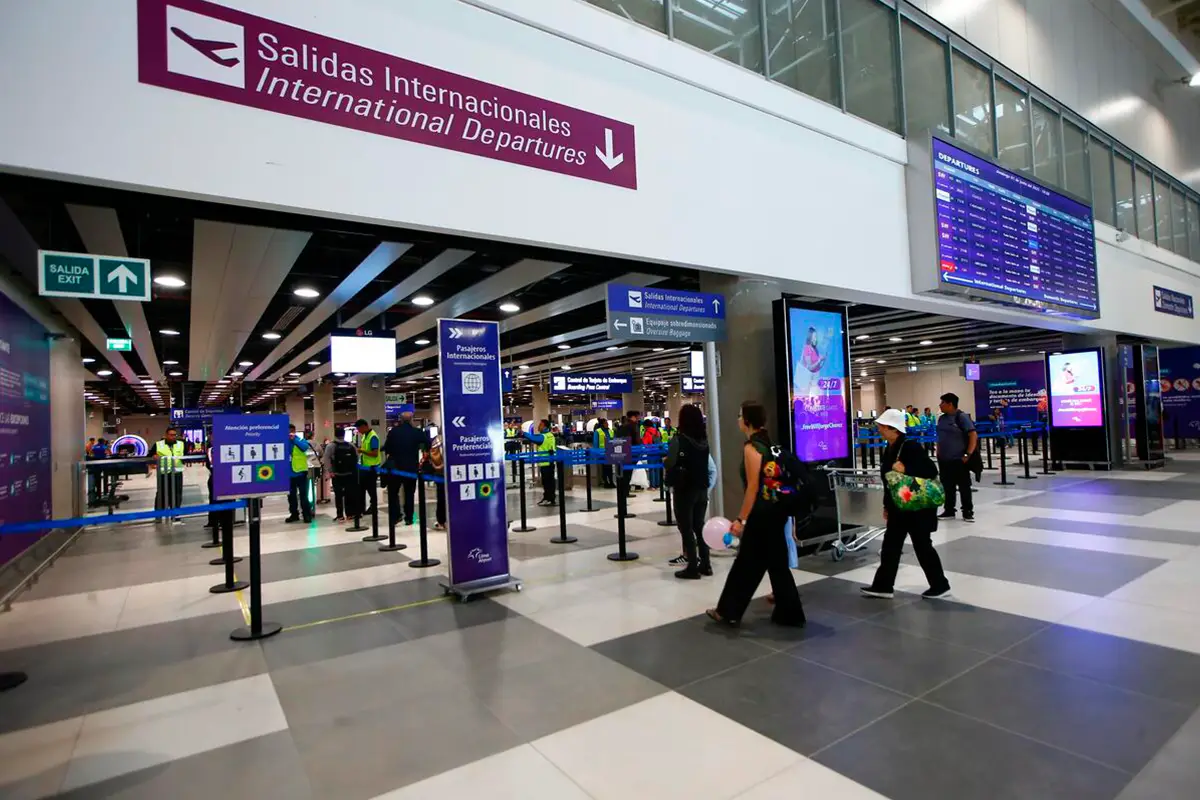

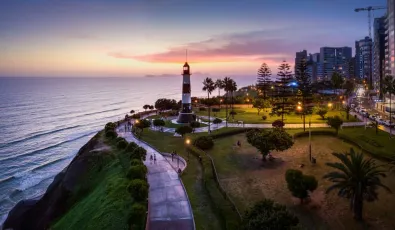
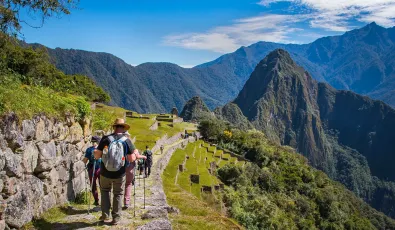
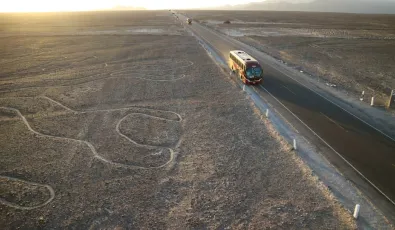
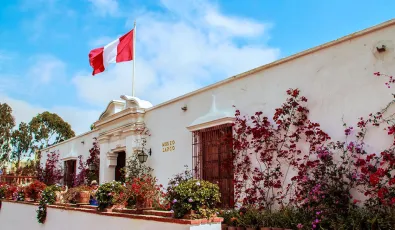
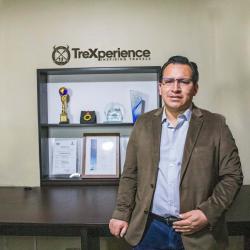
Añadir nuevo comentario